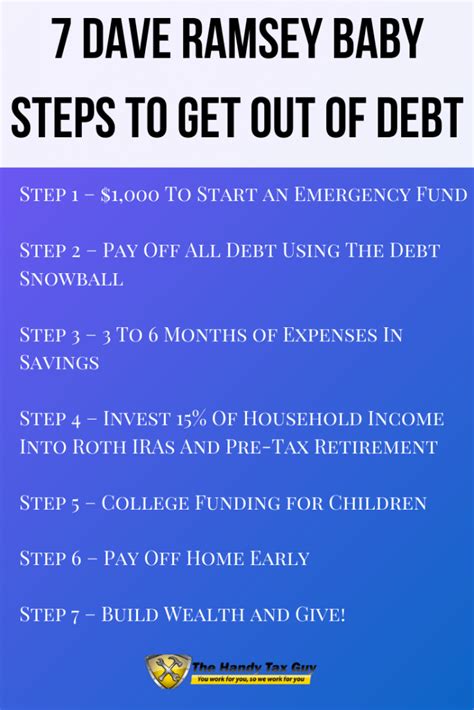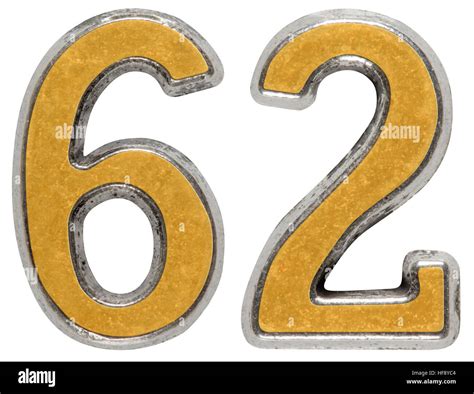
A New York City man has sparked debate online after confessing he financed an $11,000 engagement ring on a 0% APR credit card, despite having $25,000 in cash readily available. The decision, revealed in a Reddit post, has ignited discussions about financial strategy, debt management, and the psychology of personal finance.
The man, whose Reddit username was not disclosed in the original Yahoo Finance article, explained his reasoning in a now-viral post. He stated, “I just bought an engagement ring for $11k… I put it on a credit card with 0% interest for 15 months even though I have $25k in cash.” He further elaborated that his logic stemmed from a desire to maintain liquidity and potentially leverage the cash for investment opportunities. “My thoughts are keep the cash for a potential investment opportunity and pay off the ring slowly since it’s 0%,” he wrote.
The post quickly garnered thousands of comments, with opinions sharply divided. Some users lauded his strategic thinking, praising the utilization of 0% APR offers as a means of preserving capital and potentially generating returns through investments that could outpace the ring’s cost. Others criticized the decision, arguing that carrying debt, even at 0% interest, is inherently risky and that the peace of mind from owning the ring outright would outweigh any potential investment gains. Concerns were also raised about the possibility of missing payments, leading to the loss of the 0% APR and the accumulation of high-interest debt.
This situation highlights a broader conversation about financial priorities and risk tolerance, particularly among millennials and Gen Z, who often face conflicting advice on debt management. On one hand, they are encouraged to avoid debt at all costs, while on the other hand, they are bombarded with offers for low-interest credit cards and encouraged to invest early and often. The man’s decision embodies this conflict, showcasing a willingness to embrace calculated risk in pursuit of potential financial gains.
The Rationale Behind the Decision
The core of the man’s argument lies in the time value of money and the potential for investment returns. By keeping the $25,000 in cash liquid, he retains the ability to seize investment opportunities that may arise during the 15-month 0% APR period. If he can generate a return on his investments that exceeds the hypothetical interest he would have paid on the ring (had the card not offered 0% APR), he effectively comes out ahead.
He is essentially betting that his investment acumen, or simply market forces, will allow him to earn more on the $25,000 than the opportunity cost of not immediately paying off the $11,000 ring. This strategy hinges on several key assumptions:
- Investment Opportunities: He must be confident that he will find suitable investment opportunities within the 15-month timeframe.
- Investment Returns: The expected return on these investments must be high enough to justify the risk and effort involved.
- Disciplined Repayment: He must be disciplined enough to make timely payments on the credit card to avoid losing the 0% APR.
- Emergency Funds: That $25,000 likely constitutes his emergency fund as well. Tying it up in investments would leave him vulnerable.
The risk, of course, is that his investments may not perform as expected, or that he may encounter unforeseen expenses that require him to tap into his cash reserves. In such a scenario, he could find himself struggling to repay the credit card debt, potentially incurring high-interest charges and damaging his credit score.
The Counterarguments: Risk Aversion and Psychological Factors
While the man’s rationale has some merit from a purely financial perspective, it ignores the psychological and emotional aspects of debt. Many financial advisors advocate for avoiding debt whenever possible, even at low-interest rates, due to the stress and uncertainty it can create.
The argument against taking on debt, even at 0%, often revolves around the following points:
- Psychological Burden: Debt can be a significant source of stress and anxiety, affecting mental well-being and overall quality of life.
- Financial Flexibility: Carrying debt reduces financial flexibility and limits the ability to respond to unexpected expenses or financial emergencies.
- Opportunity Cost: Even at 0% interest, debt represents an opportunity cost. The funds used to repay the debt could be used for other purposes, such as saving for retirement or investing in education.
- Risk of Overspending: Having access to credit can encourage overspending and lead to further debt accumulation.
- Complexity: Managing debt requires careful budgeting and tracking of payments, which can be time-consuming and complicated.
Furthermore, relying on future investment returns to pay off debt is a risky proposition. Market fluctuations and unforeseen economic events can significantly impact investment performance, potentially leaving the individual unable to meet their repayment obligations.
The Role of Credit Scores and Financial Planning
The decision to finance the engagement ring also has implications for the man’s credit score. While making timely payments on the credit card will generally improve his credit score, carrying a high balance can negatively impact his credit utilization ratio, which is a key factor in credit scoring.
Credit utilization ratio is the amount of credit being used compared to the total available credit. Experts typically recommend keeping credit utilization below 30% to maintain a good credit score. In this case, carrying an $11,000 balance on a credit card would likely result in a high credit utilization ratio, particularly if the credit limit is not significantly higher than the balance.
A good credit score is essential for obtaining favorable terms on loans, mortgages, and other financial products. It can also impact insurance rates and even employment opportunities. Therefore, it is crucial to carefully consider the impact of debt on credit score when making financial decisions.
A comprehensive financial plan would take into account the individual’s income, expenses, assets, liabilities, and financial goals. It would also consider their risk tolerance, time horizon, and investment knowledge. In this case, a financial planner could help the man assess the potential risks and rewards of financing the engagement ring and develop a strategy that aligns with his overall financial objectives.
Generational Differences in Financial Attitudes
The contrasting viewpoints on the man’s decision may reflect generational differences in financial attitudes. Millennials and Gen Z have come of age in a period of economic uncertainty, characterized by high student loan debt, rising housing costs, and stagnant wages. As a result, they may be more willing to embrace unconventional financial strategies in pursuit of financial security.
Older generations, who experienced periods of greater economic stability and lower debt levels, may be more risk-averse and more likely to prioritize debt avoidance. These differences in financial attitudes can lead to misunderstandings and disagreements about the best approach to managing money.
The Broader Economic Context
The man’s decision also reflects the broader economic context of low-interest rates and readily available credit. In recent years, central banks around the world have maintained low-interest rates to stimulate economic growth. This has made borrowing money more affordable and encouraged consumers to take on debt.
However, low-interest rates can also create asset bubbles and encourage excessive risk-taking. As interest rates rise, the cost of borrowing increases, potentially leading to a slowdown in economic growth and a correction in asset prices.
Alternative Approaches to Funding the Ring Purchase
Instead of financing the ring on a credit card, the man could have explored alternative approaches to funding the purchase. These could include:
- Saving: He could have saved up the money for the ring over time, avoiding the need to take on debt altogether.
- Reducing Expenses: He could have reduced his expenses to free up more cash for the ring purchase.
- Selling Assets: He could have sold some of his assets to raise the necessary funds.
- Negotiating a Discount: He could have negotiated a discount with the jeweler.
- Considering a Less Expensive Ring: He could have chosen a less expensive ring that he could afford to pay for in cash.
By exploring these alternative approaches, the man could have avoided the risks and drawbacks associated with debt while still achieving his goal of purchasing an engagement ring.
The Importance of Financial Literacy
The debate surrounding the man’s decision highlights the importance of financial literacy. Many people lack the knowledge and skills necessary to make informed financial decisions. This can lead to poor financial outcomes, such as excessive debt, inadequate savings, and financial insecurity.
Financial literacy education should be a priority in schools and communities. By providing people with the tools and knowledge they need to manage their finances effectively, we can help them achieve their financial goals and build a more secure future.
The Ethical Considerations
While the man’s decision is primarily a financial one, it also raises some ethical considerations. Some critics argue that it is unethical to take on debt to purchase a luxury item like an engagement ring. They argue that it is more responsible to save up the money for the ring or to choose a less expensive option.
Others argue that there is nothing inherently unethical about financing an engagement ring, as long as the individual is able to repay the debt and does not put themselves in financial jeopardy. They argue that the decision is a personal one and that individuals should be free to make their own choices about how to spend their money.
The Perspective of the Future Spouse
An important perspective that is missing from the online discussion is that of the future spouse. It is unclear whether the man discussed his financing decision with his partner before making the purchase. If not, it is possible that his partner may have different views on debt and financial risk.
Open communication and transparency are essential in any relationship, especially when it comes to finances. Couples should discuss their financial goals, priorities, and attitudes towards debt before making significant financial decisions.
Conclusion: A Case Study in Personal Finance Complexity
The story of the NYC man who financed his engagement ring despite having ample cash serves as a compelling case study in the complexities of personal finance. It highlights the importance of considering both the financial and psychological aspects of debt, as well as the role of individual circumstances, risk tolerance, and financial literacy.
There is no one-size-fits-all answer to the question of whether or not to finance an engagement ring. The best approach depends on the individual’s financial situation, goals, and values. However, by carefully weighing the potential risks and rewards and making informed decisions, individuals can increase their chances of achieving financial success and building a secure future. Ultimately, it’s a reminder that personal finance is, well, personal. What works for one person may not work for another, and it’s crucial to understand your own financial situation and comfort level before making any major decisions.
The episode also serves as a cautionary tale about the dangers of making financial decisions based solely on potential investment returns. While it is important to consider the time value of money, it is equally important to prioritize financial stability and avoid taking on unnecessary risk.
The controversy surrounding the man’s decision underscores the importance of open and honest communication about finances, both within relationships and within society as a whole. By fostering a culture of financial literacy and encouraging people to discuss their financial challenges and successes, we can help them make better decisions and build a more prosperous future for all.
FAQ: Frequently Asked Questions
-
Why did the man choose to finance the engagement ring instead of paying cash?
The man stated that he wanted to keep his cash available for potential investment opportunities and pay off the ring slowly since it was at 0% interest. His reasoning was that he could potentially earn more on his cash through investments than the cost of the ring, effectively making money on the transaction.
-
What are the potential risks of financing a purchase, even with a 0% APR credit card?
Even with 0% APR, there are risks. Missing payments could lead to the loss of the promotional rate and the accrual of high-interest charges. Additionally, carrying a balance affects your credit utilization ratio, potentially lowering your credit score. Also, the cash tied up in investments may not realize the returns necessary to make the strategy worthwhile. Finally, unforeseen emergencies might require the use of the cash originally allocated as investment.
-
How does this decision affect the man’s credit score?
Making timely payments on the credit card will generally improve his credit score. However, carrying a high balance can negatively impact his credit utilization ratio, which is a key factor in credit scoring. A high credit utilization ratio can lower his credit score.
-
What are some alternative approaches the man could have taken to purchase the engagement ring?
He could have saved up the money beforehand, reduced his expenses to free up cash, sold assets, negotiated a discount with the jeweler, or considered a less expensive ring. Each of these options would have avoided taking on debt.
-
What ethical considerations are involved in financing a luxury item like an engagement ring?
Some argue it’s unethical to take on debt for a luxury item when cash is available, suggesting saving or choosing a less expensive option is more responsible. Others believe it’s a personal decision as long as the debt is manageable and doesn’t cause financial hardship. Communication with the future spouse about financial decisions is also ethically important.









